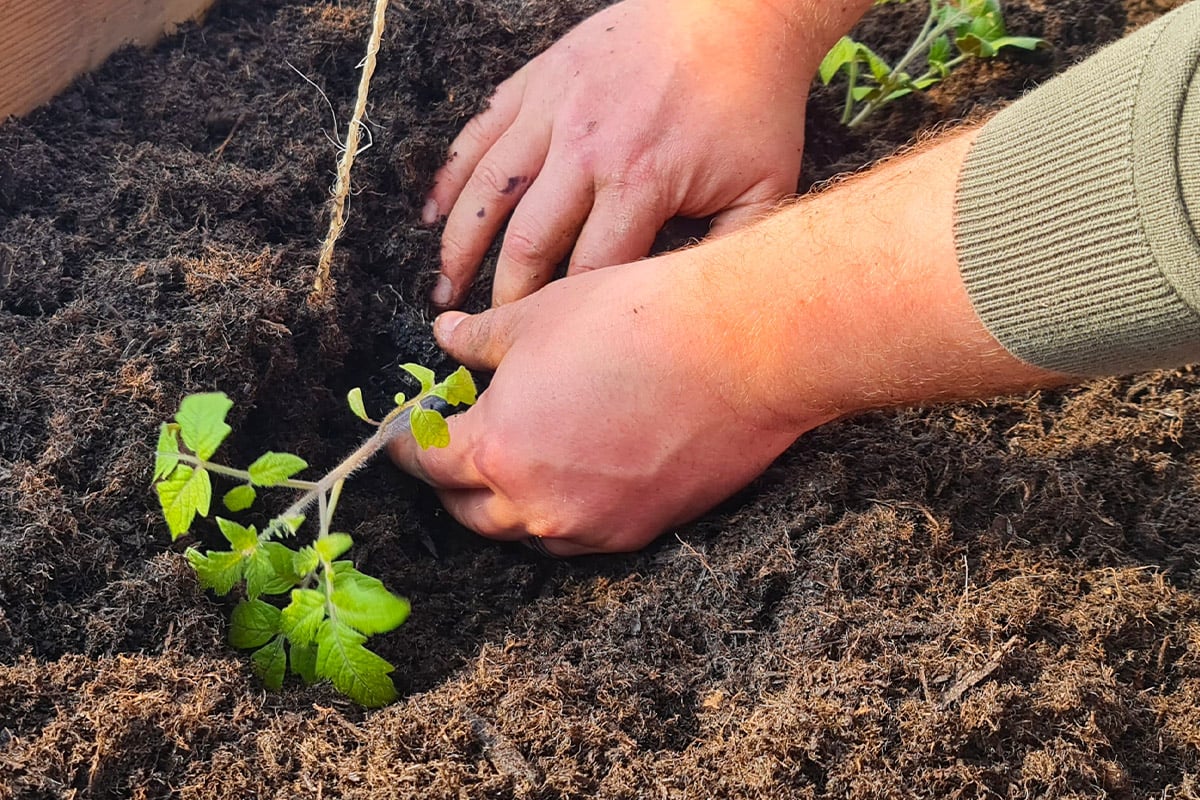Removing the lower leaves from a tomato plant becoming more and more common. The benefits are numerous, and it is something I do religiously.
So let's get into it!
Why Remove Lower Leaves
The benefits are numerous, and the drawbacks are small. Removing the leaves improves drought resistance, lowers disease risk, increases harvests and improves ripening times - time to learn how.
Increase Air Flow
One of the primary reasons for removing the lower leaves is to increase air flow around the plant.
When the lower leaves touch the soil, they can create a humid environment that encourages the growth of fungi and bacteria.
By removing these leaves, the air can circulate more freely around the plant, reducing the risk of disease.
They Are Not Doing Much
The lower leaves on your plant aren’t doing much once they begin to age and yellow. Almost all of the photosynthesis happens in the young, new leaves near the top of the plant.
You Won't Need To Water As Much
The leaves suck up a lot of water but don’t actually do much for the plant. By removing the lower leaves, we reduce the amount of water your plant needs.
Removing the lower leaves saves a lot of space, meaning you can grow plants closer together or grow something under the tomatoes - like I am going to do here with my peppers.

Pest Spotting
Another added benefit is that it helps to make spotting pests on your plant much easier.
Lower and Lean
This is a common commercial growing method that is taking off in small-scale farming and even on allotments now. The idea is to grow your tomato up a string and once it reaches the roof of your greenhouse, you lower the string, leaning the plant down and giving it more room to grow vertically.
When to Remove Lower Leaves
I remove them as the plant grows. As long as there are 7 or 8 branches with young, healthy leaves at the top of the plant, you can remove the lower ones.
You can also remove them as they yellow. Yellowing in lower leaves is caused by nutrient deficiency as the plant sends its food to the growing tip. It is also important to keep things tidy around the base of the stem to reduce disease, stop insects breeding, and increase air flow.
Removal Process
To remove the leaves, gently snip them off at the stem, you can use your hand or a pair of snips. It's important to remove the leaves gradually rather than all at once, as removing too many leaves at once can stress the plant and affect its overall health.

When removing the leaves, focus on the lower leaves that are closest to the ground.
These leaves are often the first to show signs of disease or damage, and removing them can help to improve air circulation around the plant and prevent the spread of disease.


Frequently Asked Questions
What should be removed from tomato plants?
When it comes to tomato plants, removing any yellowing or diseased leaves is generally recommended. These leaves can attract pests and diseases, harming the plant and reducing yield.
Additionally, removing the lower leaves can promote air circulation, which can help prevent fungal diseases.
Can cutting back tomato plants help them grow?
Yes, cutting back tomato plants can help them grow. By removing the lower leaves, the plant can direct more energy towards producing fruit rather than foliage.
Additionally, pruning can help promote air circulation, which can reduce the risk of fungal diseases.
Is it beneficial to remove lower leaves from tomato plants?
Yes, removing lower leaves from tomato plants can be beneficial. As mentioned earlier, it can promote air circulation and prevent fungal diseases.
Additionally, it can help the plant direct more energy towards producing fruit rather than foliage.
Should tomato plants be pruned?
Tomato plants can be pruned to promote fruit production and prevent disease. However, it's important to prune properly and not remove too many leaves or branches. Learn more about tomato pruning.






Mary Crawshaw says
IS USING SOLAR SCREENING IN hot S.C. okay. Just shading the long hot day on the sunny side of plant?
Daniel says
Sorry but i'm unfamiliar with solar shading. Living in the UK we usually don't get enough sun so im not familiar with dealing with too much!